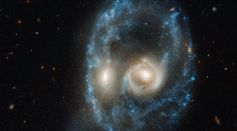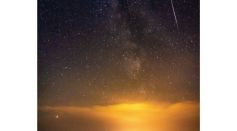Tags: Universe

The Universe is Basically Left-Handed: Here are Some Reasons Why

Scientists Find Similarities Between the Universe and the Human Brain
The Universe is Getting Hotter - Is it Affecting Global Warming?

The Very Large Telescope Detects a Supermassive Black Hole With 6 Surrounding Galaxies

Constructor Theory Could Explain Life, Universe, and Existence

Dr. Katie Mack Presents Five Possible End Scenarios for the Universe

4 Mind-Blowing Facts About the Universe That You Should Know
4 Most Interesting Things Ever Found Across the Universe

A Study on Globular Clusters Date the Universe at 13.35 Billion Years Old

Largest 3D Map of the Universe Tells The Complete Story of the Expansion of the Universe

NASA Hubble Space Telescope Detects Galaxy Moving Away From Earth at 3 Million Miles Per Hour

Hubble Captures a Ghoulish Image Produced by Twin Galaxies Colliding

The best time to view the Draconid, Orionid meteor showers
Nutrient-Rich Oceans Enceladus May Make Saturn Livable
NASA Confirms Rapid Universe Expansion is Faster Than Expected
First Universe Molecule Spotted In Space
What Was Going On Before the Big Bang?
Boy “Genius” Says Stephen Hawking is Wrong; There Is a God
A Groundbreaking Black Hole Announcement Is Coming
The Multiverse: Theoretically Inevitable
Most Popular

Memory and Learning: How the Brain Stores, Retrieves, and Forgets Information

Gut Microbiome 101: How Gut Bacteria Influence Immunity, Mood, and Metabolism

Antibiotic Resistance: How It Develops and Why Misuse of Antibiotics Is Dangerous

How Solar Activity Shapes Our Planet: What the Next Solar Maximum Means for Earth





